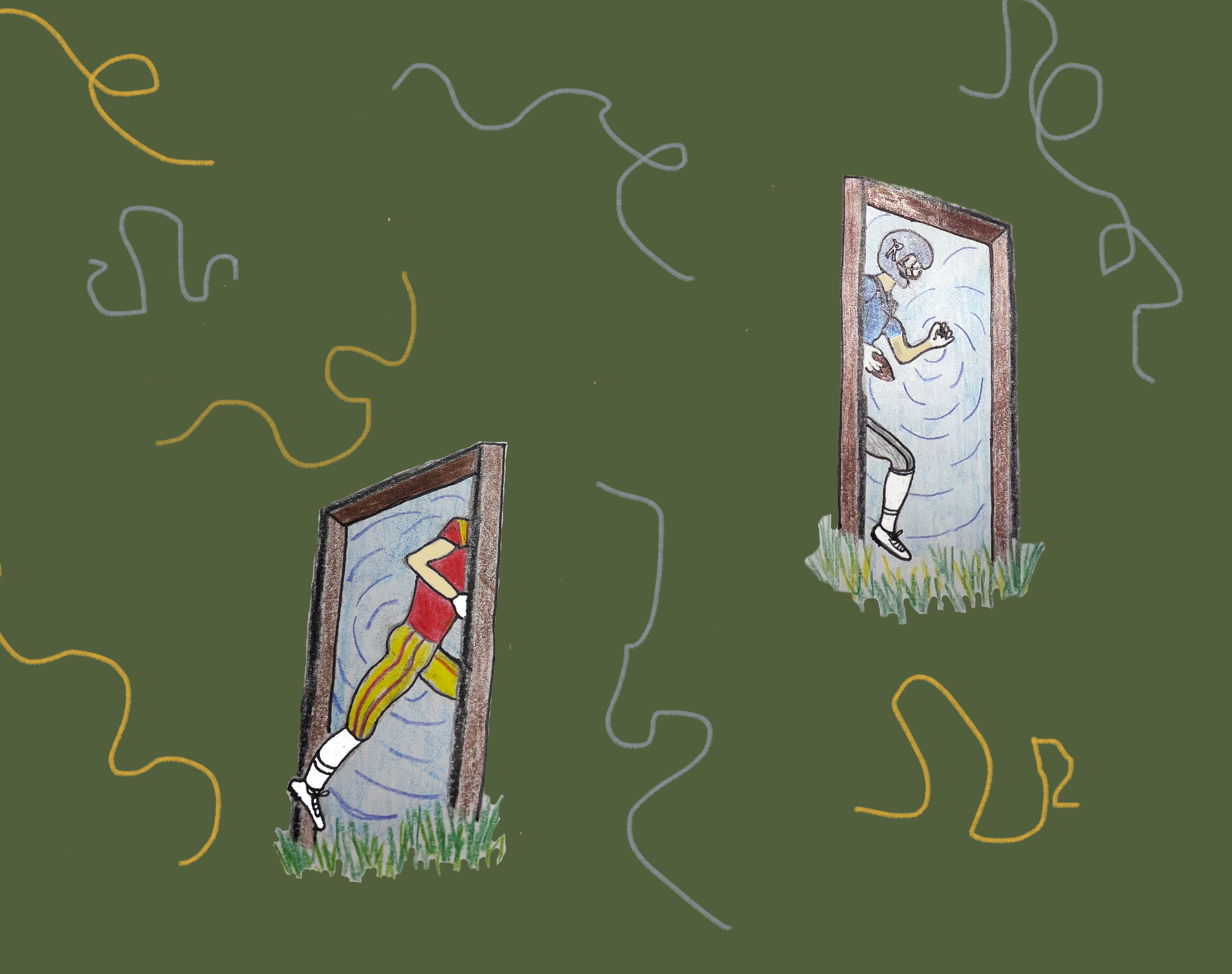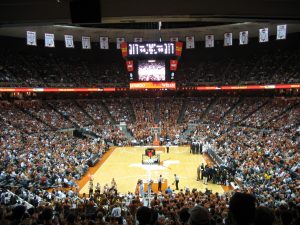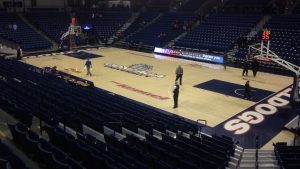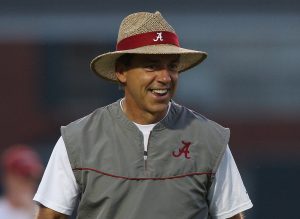“Let’s not make a mistake: We have free agency in college football.”
Lane Kiffin, the head football coach at Ole Miss, famously uttered those words to describe the massive shift that the transfer portal has brought to the world of college sports. The transfer portal—a database that streamlines the transfer process for college athletes—has transformed the offseason from a time originally focused on recruiting high schoolers to a chaotic battle between schools trying to woo some of college sports’ most established athletes.
Currently, around 1,400 men’s basketball players, 1,000 women’s basketball players, and 2,000 football players have entered the transfer portal this offseason in Division I, representing over 20 percent of scholarship athletes in each respective sport. A decade ago, the percentage of athletes transferring was in the single digits. In the modern era of college sports, student athletes regularly transfer to find better playing opportunities or to follow a coach to a new school. In addition, now that Name, Image, and Likeness (NIL) agreements are an integral part of recruiting, student athletes are now switching schools in search of not only athletic but monetary incentives.
Georgetown is no stranger to the transfer portal. Eight members of the 2022-23 men’s basketball roster—including top playmakers like Primo Spears, Brandon Murray, and Qudus Wahab—have already jumped into it. The men’s squad acted as a revolving door for transfers during Patrick Ewing’s tenure, with the entire roster, save for two scholarship players, transferring after the 2021-22 season. The women’s team has not been unscathed by the portal, either, with BIG EAST Freshman of the Year Kennedy Fauntleroy announcing that she intends to transfer.
Coaches, university administrators, and NCAA officials are beginning to criticize the new normal of frequent roster changes brought in by the portal. Research conducted by the NCAA reveals that athletes who transfer schools are less likely to earn a degree. In addition to recruiting athletes out of high school, coaches and scouts now have to pay attention to a larger volume of collegiate players, stretching recruiting resources thin. Student athletes who enter the portal but do not find a new school are at risk of losing their original scholarships. As such, the NCAA is now trying to retroactively diminish the chaos.
How did we get here?
The current chaos is the product of a half-decade’s worth of changes by the NCAA to make transferring between institutions less of a headache. Before the transfer portal, athletes wishing to transfer would have to seek permission from their coach before contacting other schools—and no coach wants to lose a star player. Once a student athlete finally transferred, they would be forced to sit out for an entire season or to request that the NCAA grant a waiver allowing them to be immediately eligible to play.
The transfer process was forever changed in 2018 with the introduction of the NCAA Transfer Portal, which has come with its own set of rules. Student athletes no longer need their coach’s permission to transfer, and in 2021, the NCAA enacted its most powerful portal-related legislation yet when it decided to allow immediate eligibility for a student athlete’s first transfer without having to request a waiver. In addition to immediate eligibility being universally granted to all first-time transfers, it also became the norm for the NCAA to grant waivers to players who transfer more than once.
A well-known example is Rice University quarterback J.T. Daniels, a senior who will start for the Owls this fall. Rice will be the fourth school Daniels has played for in his collegiate career, having previously started for Southern California, Georgia, and West Virginia. Athletes like Daniels are increasingly common in this era, as the NCAA’s easing of transfer rules has created opportunities for players to jump between multiple institutions in search of more playing time.
What is the NCAA doing about the explosion in transfers?
To stem the explosion of transfers, the NCAA released new guidelines in March restricting the reasons for approving a waiver for an undergraduate student athlete transferring for the second (and third and fourth) time. The new legislation explains that the NCAA will only grant a second-time transfer waiver for physical and mental health reasons. It also explicitly states that changes in playing time, as well as coaching changes, are no longer valid grounds to grant an eligibility waiver.
Furthermore, the NCAA has enacted strict transfer portal windows when the transfer process must take place, in order to ensure the offseason is not solely dedicated to recruiting transfer talent.
These measures are already in effect for athletes playing in the 2023-24 competition year, but the effects of these changes are yet to be seen. This is partly attributable to coaches and the media not believing that the NCAA will strictly enforce the new restrictions. If, however, the NCAA does begin to regularly deny immediate eligibility for two-time transfers, the number of players in the portal should decrease as student athletes will have to decide between staying at their current school or giving up a year of eligibility if they transfer.
The debate over the freedom to transfer has been heated on social media, with many arguing players should be allowed to follow their coaches to new programs as well as pointing out that non-student athletes face little to no restrictions when transferring schools.
The NCAA transfer portal is more of an art than a science. Its rules change multiple times a year, and the final say on a player’s transfer eligibility is left to a committee that evaluates waiver requests on a case-by-case basis. Despite the NCAA’s recent attempts to curtail the chaos wrought by transferring athletes, the transfer portal is here to stay and is likely doomed to continue being a topic of heavy debate for years to come.





